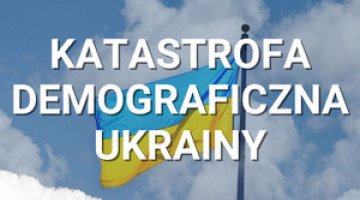Corruption and irregularities in the Ukrainian army’s rear
In June and July 2023, a series of irregularities and corruption scandals came to light in Ukraine, indicating a mounting crisis in the rear of the fighting army. The scandals regarding the activity of the regional and district military draft offices, which are responsible for carrying out mobilisation, received much publicity. The first of these scandals involved Colonel Yevhen Borysov, who supervised the Odesa regional military draft office until the end of June 2023 and has been in pre-trial detention since 25 July. According to the findings of a journalistic investigation, following the outbreak of the war Borysov bought several properties – including a villa and office space in Spain worth a total of more than €4 million – and registered them in the names of his mother and wife. When the scandal came to light, President Volodymyr Zelensky announced Borysov’s dismissal and ordered the Ministry of Defence to set up special task forces to examine the work of military draft offices and the assets belonging to their directors.
This decision resulted in further searches and arrests. On 27 July, the head of the Rivne regional military draft office was detained and charged with beating a subordinate and possessing drugs. On 1 August, the police and the general prosecutor’s office announced they would open an investigation into the embezzlement by the head of a similar institution in Dnipro, who during the war allegedly came to own several cars and two apartments. Alongside this, other investigations are under way, and several lower-ranking employees of military draft offices have been arrested, mainly on charges of accepting bribes to exempt specific individuals from mobilisation. According to a statement by Deputy Defence Minister General Oleksandr Pavluk on 26 July, the task forces investigating the work of regional military draft offices have received more than 2300 complaints from members of the public, concerning not only instances of corruption but also organisational problems. On 3 August, President Zelensky said that a preliminary check of these institutions’ activity had revealed numerous “disgusting” abuses.
The other category of irregularities involves numerous aspects of daily life and organisation in the military, and is often reported in social media and in accounts from volunteers who work for the army. They emphasise the chaotic enforcement of mobilisation and the poor work of the military medical evaluation boards, which results in men whose health and physical condition often make them unfit for active military service being drafted. The quantity and quality of personal military gear provided by the Ministry of Defence, especially to newly mobilised soldiers, has also come under criticism. As a consequence, in many aspects these soldiers are forced to rely on equipment they have purchased themselves, as well as on the assistance offered by volunteers (including military first aid kits and tactical vests).
Commentary
- The huge scale of irregularities recorded at the military draft offices, including corruption, has been corroborated by the decision to set up special task forces to inspect their work, and by the fact that the president himself has become involved in remedying the situation. The instances of bribery already revealed are just one element of a deeper organisational crisis. To resolve it, the Ministry of Defence will need to launch comprehensive measures which go beyond anti-corruption initiatives. The process of mobilisation is frequently carried out in a chaotic manner, largely due to years of neglect regarding the army’s organisational aspects. Military draft offices do not have digital databases integrated with civilian population registers, something which could help to efficiently mobilise those individuals who have the required military skills and are fit for military service. Because these registers have not been updated for years, it is impossible to analyse the Ukrainian population’s movement within the country’s borders, a situation which was exacerbated by the war. Therefore, the local military draft offices have no exact information on how many men subject to mobilisation actually live in a given area, or how many of them have military experience. This has forced the authorities to apply certain half-measures, such as approaching individuals who may be subject to mobilisation in the street and in their workplaces to hand in summonses to visit a military draft office where they can provide their updated personal details. Another problem is the shortfall of personnel at the military draft offices, resulting from the fact that in the first months of the war many officers left their job at these facilities to join the newly formed front line units.
- These organisational problems are affecting the Ukrainian public’s opinion of the mobilisation process. Some men are increasingly worried that they may be conscripted into an army which will not provide them with adequate training or equipment, which in turn increases corruption. Almost a year and a half into the war, the number of volunteer soldiers is decreasing, while losses among military personnel are increasing. As a consequence, large numbers of mobilised 30- and 40-year-olds who are in poor physical condition and have low levels of motivation are being sent to serve in frontline brigades. Volunteer soldiers, in particular the youngest, mainly wish to serve in those units which have elite reputations (such as the units formed on the basis of the Azov group, including the 3rd Assault Brigade and the National Guard’s Azov Brigade) and other volunteer units (such as the 67th Mechanised Brigade), or in some of the brigades formed as part of the so-called Offensive Guard. All this is provoking increasing internal divisions within the army: some of the voluntary units are attracting fewer and fewer idealistically-minded volunteers, while most of the front line brigades are drafting mobilised reservists, who are increasingly less valuable as regards their level of motivation, training and physical condition.
- These problems, albeit serious and affecting thousands of mobilised soldiers, are not at present translating into any major reduction of the Ukrainian army’s combat capability. So far, the mobilisation system has managed to replace the killed and wounded soldiers with newly drafted ones, and most brigades have formed a core made up of experienced non-commissioned officers and officers, who, despite growing fatigue and mounting difficulties, are able to organise their sub-units and lead them into battle. It is due to their resolve that Ukrainian soldiers still have a high fighting spirit and believe in their ultimate victory, while instances of desertion and failed discipline are isolated and tend to concern individual soldiers rather than larger groups or units. However, the looming organisational crisis cannot be denied, and its causes are purely internal: they cannot be explained in terms of arguments such as insufficient technical assistance from the West.




